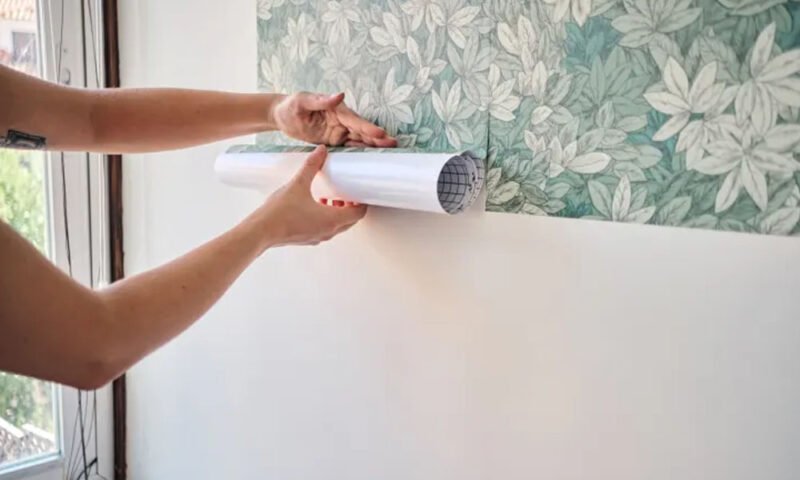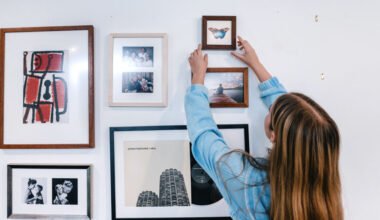Let’s be honest—working with a small bedroom can feel like trying to squeeze your entire personality into a carry-on bag. Between the bed, side tables, a wardrobe, and maybe a plant or two (for sanity), the space runs out fast. But don’t worry—you don’t need to knock down a wall or start a renovation. Sometimes, the right wallpaper is all it takes to give your cozy corner some much-needed breathing room.
That’s right—wallpaper isn’t just a pretty backdrop. It can cleverly trick the eye, manipulate depth, and make even the tiniest room look airier, taller, and more open. And no, we’re not talking about boring, one-color walls. We’re talking about design with intention.
Here’s a breakdown of some of the smartest wallpaper strategies that can visually open up your small bedroom—and make it feel like you’ve added square footage without moving a brick.
1. Go Light, but Not Bland
Let’s start with the basics: light colors reflect light. That’s not just science, it’s solid interior design logic. Soft shades like pale blue, ivory, muted blush, and soft greys make walls feel like they’re receding, which opens up the space.
But here’s the trick—don’t default to flat white. That can actually make your room feel sterile or boxy. Instead, opt for wallpapers with a subtle texture or tone-on-tone pattern. Think fine stripes, light marble effects, or delicate florals in pastel tones. They add visual interest without overwhelming the room.
2. Vertical Stripes = Taller Ceilings
This one’s a classic: vertical lines draw the eye upward, creating the illusion of higher ceilings. If your room feels squat or cramped, vertical striped wallpaper can make it look instantly taller and more refined.
The stripes don’t have to be bold or high-contrast either. Even narrow pinstripes or tonal vertical patterns can do the trick. Bonus: it adds a touch of elegance without crowding the space.
3. Horizontal Patterns Can Widen Narrow Rooms
Now if your room is tall and narrow—say, like a converted storage room or a makeshift guest bedroom—horizontal patterns can help stretch it out visually. This includes classic horizontal stripes, wavy patterns, or wallpapers with linear textures.
Just remember: this works best on one feature wall. Applying a strong horizontal across all walls can make things feel a bit too spread out or dizzying.
4. Try a Soft, Receding Feature Wall
Most people are tempted to go bold on a feature wall—and that can work if done wisely. In small bedrooms, it’s smarter to use soft, receding colors and abstract or watercolor designs. These create depth without bringing the wall forward.
For example, a misty forest wallpaper in grayscale or a cloudy ombré effect can visually stretch the wall and give your eyes somewhere to travel. It makes your room feel expansive without being loud.
5. Avoid Busy, Loud Patterns in All-Over Applications
We get it—florals, geometrics, animal prints…they’re fun. But in a small room, busy and tightly packed patterns can feel claustrophobic. If you really love that bold leafy wallpaper or wild terrazzo, use it on a single accent wall or inside a panel—like the space behind your bed. Pair the rest of the walls with coordinating solids or neutral textures to balance it out.
If you want all four walls covered, stick to soft, spaced-out motifs. Think Scandi florals, brushstroke patterns, or line drawings with plenty of negative space.
6. Reflect Light With Subtle Shine or Metallic Accents
No mirrors? No problem. Wallpaper with a slight sheen, pearlescent finish, or metallic highlights can bounce light around just like a mirror would. It doesn’t have to be glittery or loud—just a touch of gold, silver, or mother-of-pearl embedded in a neutral or pastel wallpaper can work wonders.
Use these strategically on walls that get some natural light during the day—sunlight will reflect subtly, giving your space that open, glowing feel.
7. Use Mural-Style Wallpapers for Depth
Mural wallpapers aren’t just for kids’ rooms. A landscape mural, botanical scene, or architectural sketch can create a sense of distance in a small space. Imagine looking out over a mountain valley or a quiet woodland—your eyes naturally follow the depth, which tricks your brain into believing the room goes further than it actually does.
Choose soft, natural tones for a calming and expansive effect. This technique is especially good for the wall behind your bed or at the far end of the room.
8. Don’t Forget the Ceiling
Here’s a secret most people don’t consider: the fifth wall is a powerful tool. In a small bedroom, wallpapering the ceiling in a light, cloud-like pattern or subtle texture can add vertical interest and make the ceiling feel taller.
Or, if you’re feeling bold, wallpaper just the ceiling and keep the walls simple. It draws the eye upward and makes the room feel layered and thoughtfully designed.
Let Wallpaper Work Its Magic
Small bedrooms come with their fair share of challenges, but they also offer a unique opportunity: you don’t need much to make a big impact. With the right wallpaper tricks—light colors, clever patterns, and a bit of visual misdirection—you can completely transform the way your room feels and functions.
So next time you feel boxed in, don’t reach for a sledgehammer. Reach for the wallpaper swatches. You might just find your small bedroom feeling a whole lot bigger.






